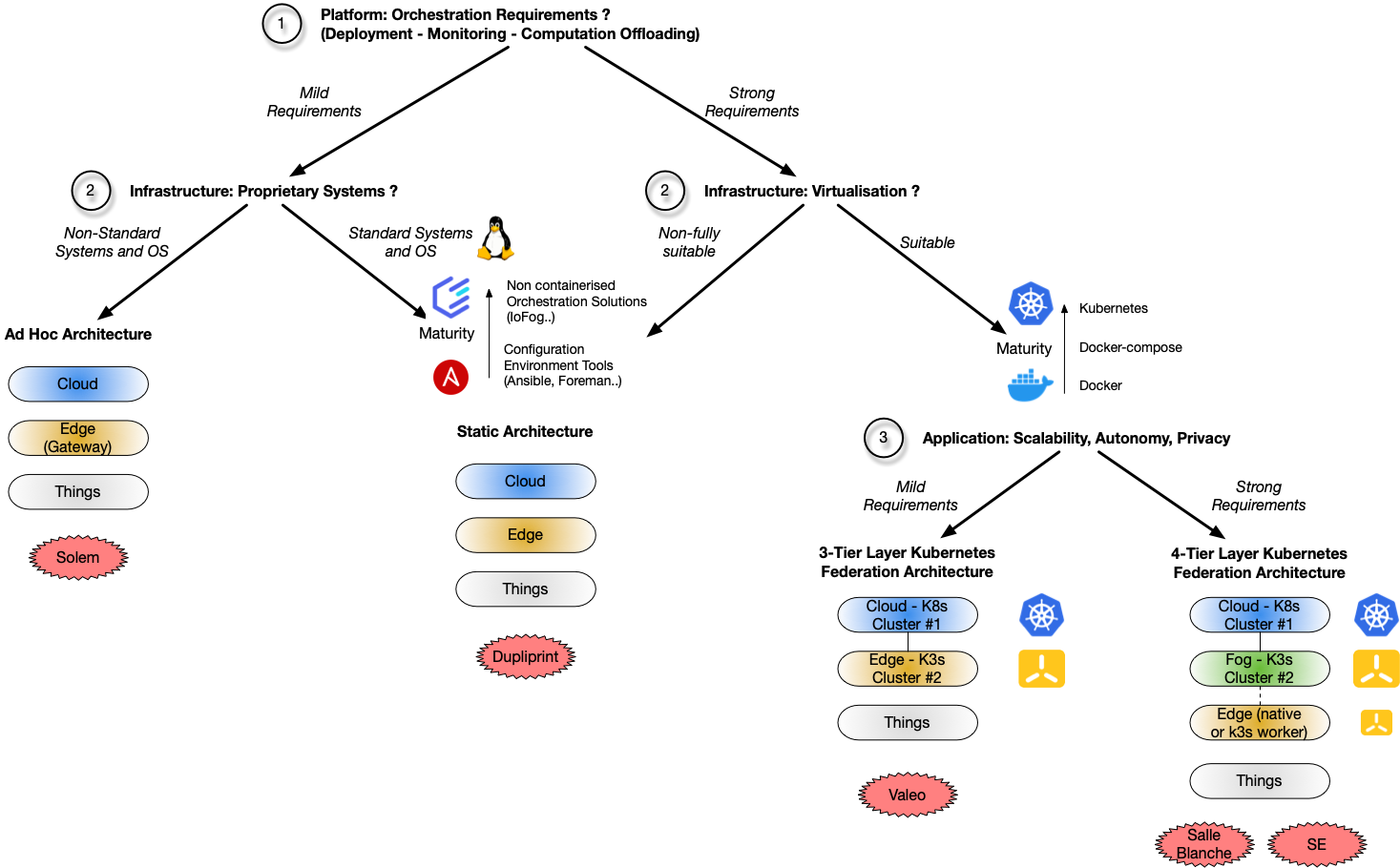
The project, which kicked off in 2021 for an initial three-year period, is being run by a consortium of leading national industrial corporations (Atos, Schneider Electric, and Valeo) and small to medium-sized businesses (Agileo Automation, Mydatamodels, Dupliprint, Solem, Prosyst, and Soben). Top-tier research organizations (CEA, Inria, IMT, and CAP’TRONIC) are providing substantial support. CEA-List, CEA-Leti, and CEA-Liten are contributing to the project, which is part of the French government’s national cloud computing strategy and the national Industry 4.0 roadmap. As project coordinator, CEA-List is getting all its departments involved in developing solutions to manage the data produced by cyber-physical systems.
During the first year of the project, the objectives were confirmed, and the research began, with CEA-List focusing on three main pillars:
1- Manage heterogeneous distributed infrastructures from device to cloud (Figure 1):
2- Develop technology bricks for the Edge-to-cloud continuum.
3- Improve and optimize the use of our technology bricks in the trusted IOT2cloud continuum:
Applications will be developed as ROS nodes and deployed as containers. A variety of protocols will then be used for operational deployment and maintenance.


We are making distributed systems more reliable from Edge to cloud.
The technology in use:
Major partnerships: